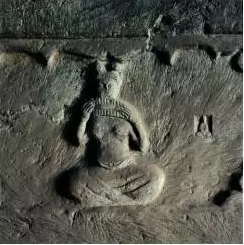The Longmen Grottoes and musical caves
Updated: 2016-01-22
The Longmen Grottoes in Luoyang, Henan province is one of the three notable grottoes in China. The other two are the Yungang Caves near Datong in Shanxi province, and the Mogao Caves at Dunhuang in Gansu province.
The historical grottoes have many caves which are related to music and carved with people who play musical instruments or dance to music. The majority of such figures are female. The carvings give a true portrait of musicians as well as the music life during the Tang Dynasty (AD 618 -960) in ancient China, the golden period for the opening of grottoes in Longmen.

 |
|
The musician carvings in Baizuosi Cave [Photo / Longmen Grottoes on WeChat] |
The musical caves mainly include the Wanfo Cave, Fengnan Cave, Bazuosi Cave, Longhua Temple Cave, Jinan Cave and so on. There usually is an annular decorative belt at the bottom of the cave walls, consisting of dancers and musician images accompanied by different musical instruments.
The carvings exude a mysterious and solemn religious air and represent people's pursuit of happiness in real life.
 |
| Dancers in Jinan Cave [Photo / Longmen Grottoes on WeChat] |
In Longmen Grottoes, the open-air museum of ancient Buddhist cave art, as many as 21 grottoes have music related contents, covering 34 sets of statues in band images and at least 176 musical instruments can be identified here. The various instruments held by the musicians include flute, panpipe, guzheng, xiao, straight-necked pipa, curved-neck pipa, five-stringed pipa, Konghou and cymbal.
The vivid images of the music players, dancers and singers show a rich and prosperous life during the dynasty, when the art of dance and music was highly developed.






